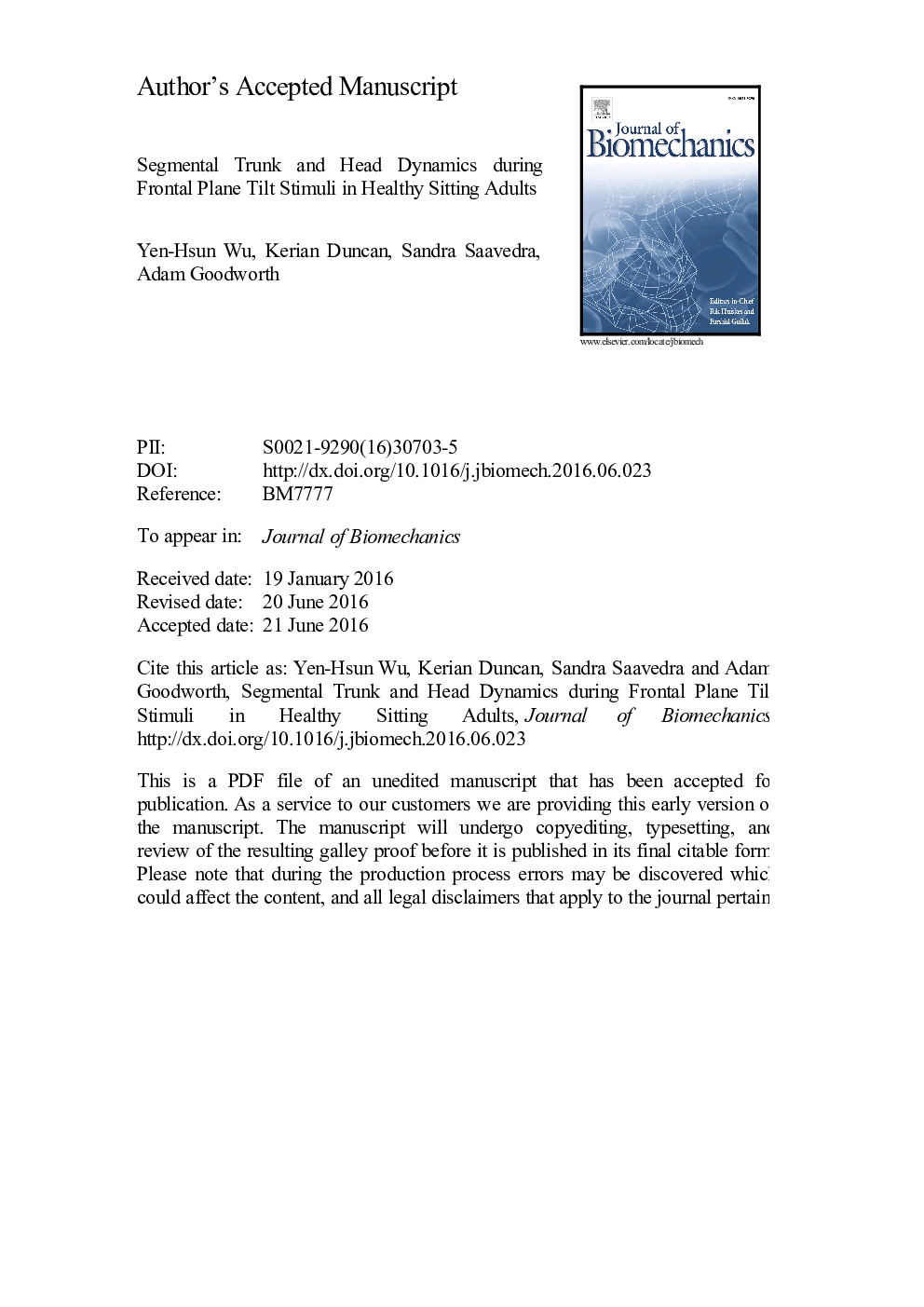| Article ID | Journal | Published Year | Pages | File Type |
|---|---|---|---|---|
| 5032459 | Journal of Biomechanics | 2016 | 25 Pages |
Abstract
A more detailed understanding of trunk behavior during upright sitting is needed to create a foundation to address functional posture impairments. Therefore, we characterized the dynamics of the trunk and head during perturbed sitting. A three-link inverted pendulum model of head and trunk segments was used to analyze kinematics of eight healthy sitting adults. Magnetic sensors were placed at the head and two locations of the trunk (C7 and T7). Six surface tilt stimuli (two spontaneous sway tests [no surface stimulus; eyes open, EO/eyes closed, EC] and four tests with continuous pseudorandom surface tilts [2 peak-to peak amplitudes of 2° or 8°; EO/EC]) were applied in the frontal plane. We used frequency-response functions (FRFs) to analyze sway across ~0.045-3 Hz and found systematic differences in sway dynamics across segments. Superior segments exhibited larger fluctuations in gain and phase values across frequencies. FRF gains in superior segments were attenuated compared to other segments only at low frequencies but were larger at the higher frequencies. We also tested the influence of stimulus amplitude and visual availability on FRFs. Across all segments, increasing stimulus amplitude and visual availability (EO) resulted in lower gains, however, these effects were most prominent in superior segments. These changes in gain were likely influenced by changes in sensory reliance across test conditions. In conclusion, these results provide a benchmark for future comparisons to segmental responses from individuals with impaired trunk control. We suggest that a frequency-based approach provides detail needed to characterize multi-segment dynamics related to sensorimotor control.
Keywords
Related Topics
Physical Sciences and Engineering
Engineering
Biomedical Engineering
Authors
Yen-Hsun Wu, Kerian Duncan, Sandra Saavedra, Adam Goodworth,
